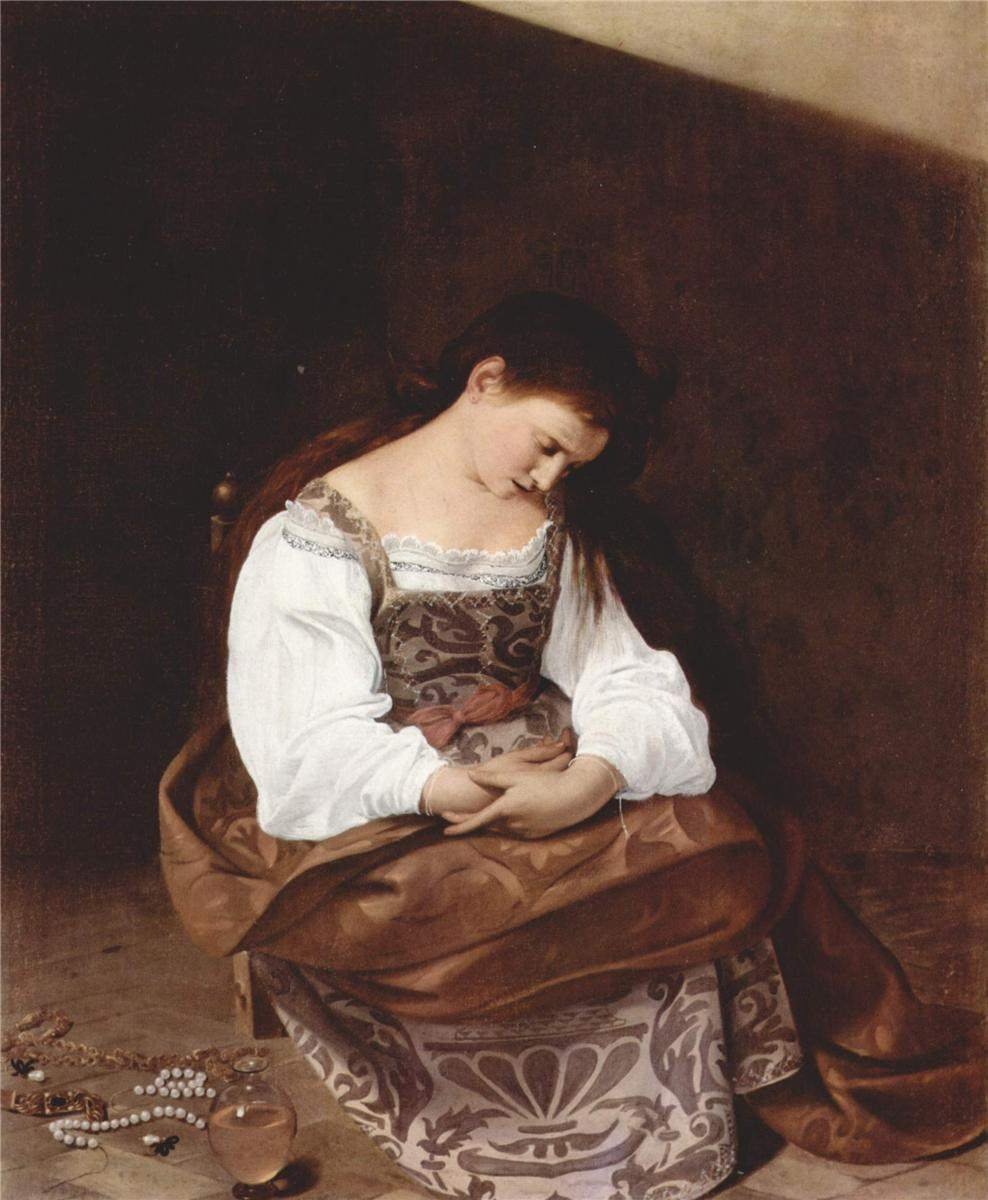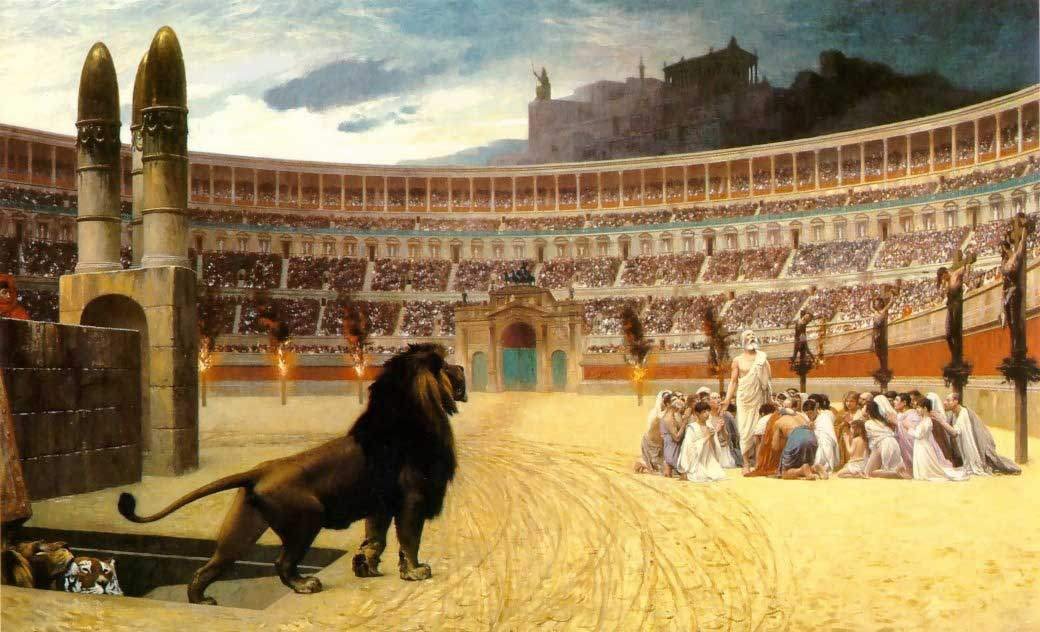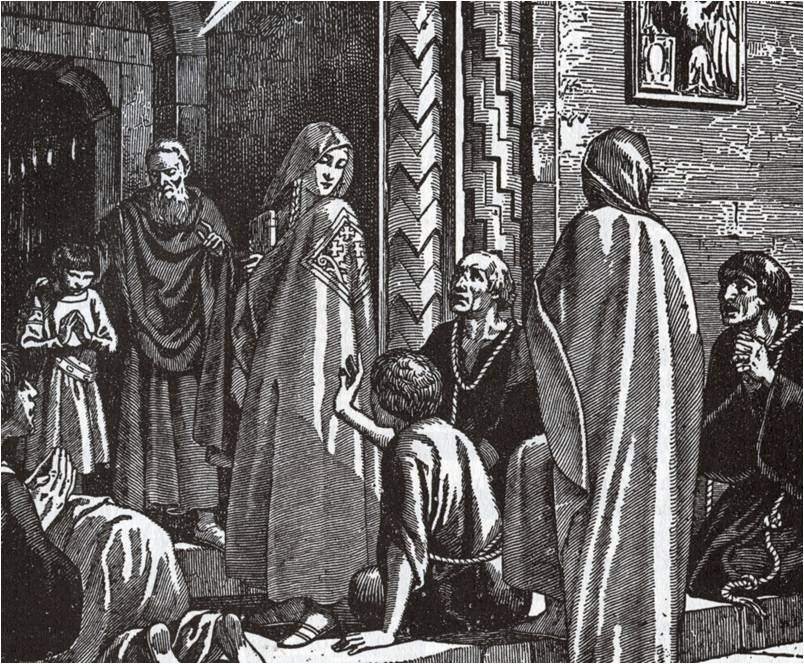
Penitent Magdalene (c. 1597), by Caravaggio (WikiPaintings.org.
Part 2 of a series on Indulgences. Part 1.
So last time, I showed you the basic idea of indulgences: First, that sin has temporal consequences, apart from the guilt which Jesus forgives by His grace — the misery that our sin causes for us and others, called the temporal punishment, which we still must suffer even after our sins are forgiven (cf. Psalm 51). By the power of “binding and loosing” given to the Apostles (Matthew 18:18, John 20:22–23) the priests of the Church have the authority to impose penance on us — not a punishment, but a remedy designed to help us work through through that temporal punishment, to aid in the healing of our souls and our growth in grace. And because the Church imposed the penance, the Church has the power to remit it (cf. 2 Corinthians 2:6–11). And this is an indulgence at its most basic definition: the remission of a temporal penance caused by a sin whose guilt has already been forgiven.
Protestant critics suggest that Indulgences are a “medieval” doctrine, but in fact, the roots of the doctrine go back to the very dawn of the Church. And the doctrine, rather than being a late development, was formed in the crucible of the suffering and persecuted Church of the first centuries. We know that the sorrow of sin brings repentance, and repentance leads to salvation (2 Corinthians 7:10) — and the sufferings of a certain group of sinners came to be borne by the whole Church (cf. 1 Corinthians 12:24–26) — especially by those believers who gave their all, their very lives.
In the earliest centuries of the Church, the Church imposed especially harsh canonical penances for grave sins — not your common lusting with the eyes, arguing with a brother, or drinking intemperately, but major, public offenses against the moral law and against the community, like murder, adultery — or especially apostasy, which was increasingly a problem in the age of persecution. Many believers would renounce Christ when faced with arrest or bodily harm, only to repent later: these were the lapsi, those having lapsed. So the Church instituted an order of public penitents: believers who, even though the guilt of their sins had been forgiven, still had a penance to pay. These people would put on sackcloth and ashes and stand outside the church begging for the prayers of the faithful, often for a matter of years, before their debt to the community had been paid and they were allowed to return to the full communion of the Church.
(And if you think that is harsh, this is actually the compromise position. There was a schism in the Church for a time over the fate of the lapsi, with many believers following Novatian, who argued that the lapsi couldn’t be restored to the communion of the Church at all.)

The Christian Martyrs’ Last Prayer (1883), by Jean-Léon Gérôme, my favorite Orientalist painter. It truly captures the drama and the agony of the first Christian persecutions, and yet the peace before God.
And from the Church’s crisis, these many lapsi longing desperately to return to the Lord’s communion, and the flowing blood of the many confessors and martyrs, a curious thing arose: The lapsi began visiting the condemned witnesses in prison before their impending martyrdoms, and obtaining from them letters or certificates pleading on their behalf — called the desideria or libelli of the martyrs — promising to offer up their sufferings on their behalf, and to intercede for them before God for their restoration when they reached heaven. And such assurance gave great comfort and grace to the fallen — and brought the bishops of the Church to credit such intercession to the cases of the lapsed.
We learn from the letter of the Churches of Vienna and Lugdunum (Lyons), dated ca. A.D. 177, possibly written by St. Irenaeus himself:
“[The witnesses] did not boast over the fallen, but helped them in their need with those things in which they themselves abounded, having the compassion of a mother, and shedding many tears on their account before the Father. They asked for life, and He gave it to them, and they shared it with their neighbors. Victorious over everything, they departed to God. Having always loved peace, and having commended peace to us, they went in peace to God, leaving no sorrow to their mother, nor division or strife to the brethren, but joy and peace and concord and love.” (quoted in Eusebius, Ecclesiastical History V.5.6–7)
St. Cyprian, bishop of Carthage, was at the very center of this crisis in the Church. His letters record an ongoing exchange about this matter: to what degree to reckon the intercession of the martyrs to the accounts of the lapsi, and if, and when, to restore them to communion. Regarding lapsi who were at risk of death, and had one last chance for Communion before their departure, and had received the testament of a martyr:
“They who have received a certificate from the martyrs, and can be assisted by their help with the Lord in respect of their sins, if they begin to be oppressed with any sickness or risk; when they have made confession, and have received the imposition of hands on them by you in acknowledgment of their penitence, should be remitted to the Lord with the peace promised to them by the martyrs.” (Cyprian, Epistle XIII [ANF ed.; XIX in Oxford ed.], A.D. 250)
Regarding the efficacy of such heavenly help, Cyprian wrote:
“[God] can show mercy; He can turn back His judgment. He can mercifully pardon the repenting, the labouring, the beseeching sinner. He can regard as effectual whatever either martyrs have besought or priests have done on behalf of such as these.” (Cyprian, De lapsis [On the lapsed] 36, A.D. 251)
We recognize these certificates or libelli as the first written indulgences. The intercession of the martyrs — now saints in heaven — brought remission to the punishments of the lapsi; and these documents were the proof of their aid. And herein we see the truth of what Indulgences are really all about: the communion of saints — our common life as the Body of Christ.
Next time: I’ll delve deeper into the theology of Indulgences — one of the most beautiful and powerful things I’ve encountered. Many folks argue that Indulgences are an “archaic” practice that should be dismissed; but I think rather they need to be taught more and better understood.


